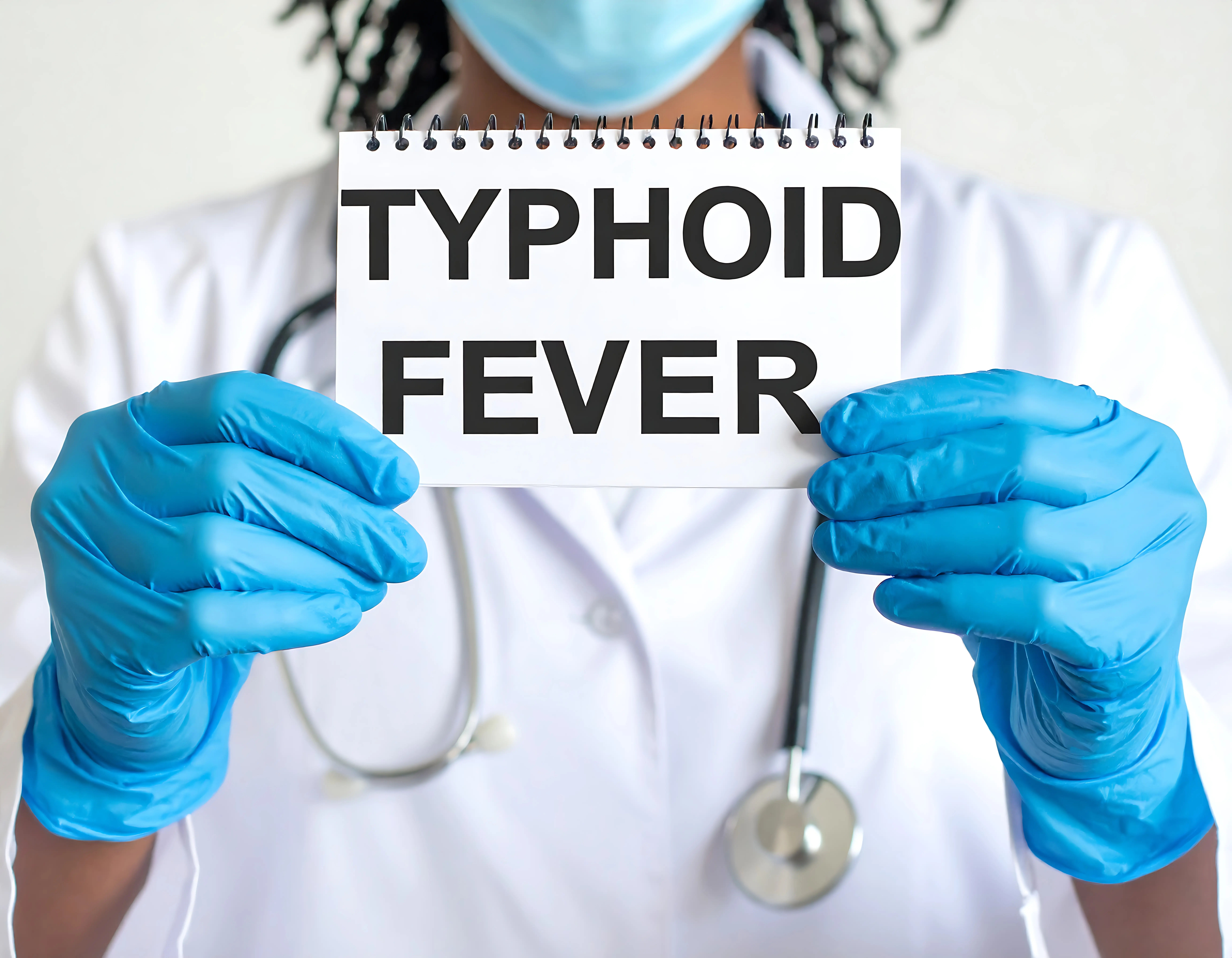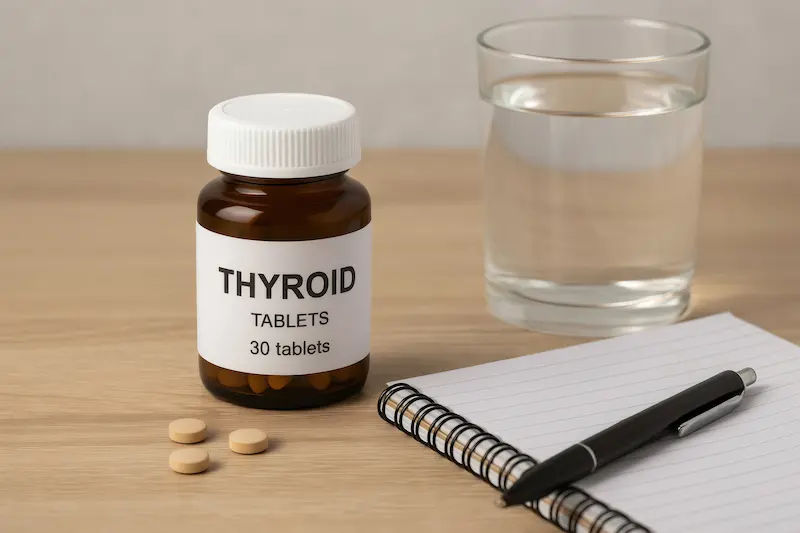Thyroid Blood Supply: Overview and Clinical Significance
Discover the vital role of thyroid blood supply in hormone production, thyroid function, and surgical outcomes. Learn about the anatomy, arterial supply, venous drainage, related disorders, and diagnostic methods to maintain thyroid health.

Written by Dr Sonia Bhatt
Last updated on 3rd Jul, 2025
The thyroid gland is located at the anterior lower part of the neck. This butterfly-shaped organ plays a critical role in regulating metabolism, growth, and development through the production of thyroid hormones: triiodothyronine (T3) and thyroxine (T4). Its position and function make it highly dependent on a robust and efficient blood supply.
The highly vascularised thyroid gland supports hormone synthesis, storage, and secretion while enabling quick adaptation to the body’s metabolic demands. Understanding the thyroid blood supply is essential for accurate diagnosis and management of thyroid disorders.
Anatomy of the Thyroid Gland
In the following sections, learn more about the thyroid gland’s anatomy and how blood supply to this organ works.
Arterial Supply to the Thyroid Gland
The superior thyroid artery (STA) and the inferior thyroid artery (ITA) maintain blood flow to the thyroid gland. STA branches out from ECA (external carotid artery), while ITA arises from the thyrocervical trunk. These arteries form a bilateral anastomose (a connection between two blood vessels) with the thyroid gland.
Venous Drainage of the Thyroid Gland
The superior, middle, and interior thyroid veins form a venous plexus, which facilitates the thyroid gland's venous drainage. This network efficiently collects deoxygenated blood from the gland and channels it into the internal jugular and brachiocephalic veins.
Major Arteries Supplying Blood to the Thyroid Gland
The thyroid gland receives blood from several arteries, which include:
1.Superior Thyroid Artery
The superior thyroid artery is a branch of the external carotid artery, lying close to the superior laryngeal nerve’s external branch. It supplies blood to the upper portions of the thyroid. It often forms an anastomosis with the inferior thyroid artery, ensuring abundant blood flow.
2.Inferior Thyroid Artery
The inferior thyroid artery originates from the subclavian artery’s thyrocervical trunk and lies close to the recurrent laryngeal nerve. It primarily supplies blood to the lower part of the thyroid gland.
3.Thyroid Ima Artery (Additional Artery)
Thyroid ima artery is present in a minority of individuals. It is an additional artery that arises from the aortic arch’s brachiocephalic trunk. It supplies blood to the isthmus and anterior surface of the thyroid gland.
Venous Drainage of the Thyroid Gland
The venous drainage of the thyroid gland takes place through the following veins:
1.Superior Thyroid Vein
The superior thyroid vein originates from the thyroid venous plexus and passes across the common carotid artery and the omohyoid muscle. It drains blood into the internal jugular vein.
2.Middle Thyroid Vein
The middle thyroid vein is located at the centre of the thyroid lobe and passes through the common carotid artery before draining into the internal jugular vein.
3.Inferior Thyroid Vein
The inferior thyroid veins are of two types, left and right, and they drain into the left and right brachiocephalic veins.
The right and left internal jugular veins drain to the respective subclavian veins, forming right and left brachiocephalic veins. These two veins then return deoxygenated blood to the right atrium by creating a superior vena cava.
Role of Blood Supply in Thyroid Function
Adequate oxygenation and nutrient delivery via the arterial supply is crucial for thyroid hormone synthesis. Thyroid follicles depend on these supplies for iodine uptake, the key element in hormone production.
The release of thyroid hormones T3 (triiodothyronine) and T4 (thyroxine) in the bloodstream plays a crucial role in regulating blood pressure and body temperature, converting food and nutrients into energy, and more. This gland also produces calcitonin hormone to regulate the amount of calcium in the blood.
Clinical Significance of Thyroid Blood Supply
Below are the key considerations regarding how the thyroid blood supply influences surgical procedures and the management of thyroid-related disorders:
1.Impact on Thyroid Surgeries
While performing thyroid surgeries like thyroidectomy (removing all parts of the thyroid gland) or parathyroidectomy (removing one or more parathyroid glands), arteries supplying blood need attention.
The recurrent laryngeal nerve, a branch of the cranial nerve (CN X), runs beside the inferior thyroid artery, severing the ITA injury to the recurrent laryngeal nerve. Since this nerve innervates the larynx, damage to it may lead to hoarseness in the patient’s voice.
To prevent patients from hypocalcemia (deficiency of calcium in the blood), surgeons often leave one parathyroid gland during thyroidectomies. This is because parathyroid glands receive blood supply through inferior thyroid arteries, and any accidental step during surgeries can lead to hypoparathyroidism (a condition when the parathyroid gland fails to produce adequate parathyroid hormone).
2.Hyperthyroidism and Blood Supply
Inadequate blood supply to the thyroid gland may increase T4 production and reduce TSH production. As a result, patients may suffer from hyperreflexia and tachycardia along with other symptoms like constipation, anxiety and weight loss.
Common Disorders Related to Thyroid Blood Supply
This section outlines some of the most common thyroid disorders and the essential role that blood supply plays in their onset and progression:
1.Goitre and its Blood Supply Implications
In goitre, the base of the neck swells up, with some symptoms like excess sweating, rapid heartbeat and high BP. However, in most cases, goitre does not show any signs and symptoms. Several reasons can lead to this medical condition, including iodine deficiency, Grave’s disease and Hashimoto’s disease.
One of the significant causes of goitre is an increase in vascularisation. This condition is common in Grave’s disease and Hashimoto’s disease, where the gland compensates for hormonal production demands through excessive blood flow in the thyroid gland.
2.Vascular Abnormalities Affecting the Thyroid
Vascular malformations or abnormalities mostly get diagnosed accidentally since it is a very rare syndrome. As per case studies, abnormal connections between veins and arteries near the thyroid gland can lead to arteriovenous malfunctions (AVMs). It can cause mechanical neck syndrome, followed by complications like breathing difficulties.
Diagnostic Methods for Evaluating Thyroid Blood Supply
It is essential to evaluate the blood supply to the thyroid gland for diagnosis of various thyroid disorders like Grave’s disease and hyperthyroidism. Ultrasonograpy creates a detailed image of the thyroid gland using high-frequency sound waves. It is a non-invasive imaging technique that assesses the thyroid structure and identifies abnormalities in the thyroid gland.
Thyroid artery Doppler studies or colour Doppler ultrasound helps assess blood flow in thyroid arteries. This method measures hemodynamic parameters such as peak systolic velocity (PSV) and end-diastolic velocity (EDV), which are critical in differentiating between various thyroid conditions.
Prevention and Management of Thyroid Blood Supply Issues
Below are key strategies for preventing and managing disorders related to thyroid blood supply:
1.Lifestyle Factors
A healthy change in lifestyle can maintain proper thyroid blood supply, preventing risks of thyroid disorders. Smoking is one of the primary reasons for various thyroid disorders. Quitting this habit can help maintain thyroid functioning.
Besides, a stressful life can affect the hormonal balance of an individual, causing thyroid disorders. Indulging in stress-relieving activities such as meditation and yoga can be helpful.
2.Medical Intervention
Medical treatments to maintain a healthy thyroid blood supply include hypothyroidism and hyperthyroidism management. In hypothyroidism management, synthetic thyroid hormones are used to improve the blood supply and restore normal hormone levels.
Conversely, hormone production increases in hyperthyroidism. Thus, antithyroid medications, radioactive iodine therapy, and other methods are used to reduce hormone production and maintain the iodine level.
Conclusion
The blood supply to the thyroid is essential not only for the synthesis of hormones but also for ensuring optimal surgical outcomes and preventing complications. Recent developments in diagnostic studies and the increasing knowledge of vascular dynamics have helped in the management of thyroid diseases.
It is expected that subsequent research will provide a better understanding in the future and, hence, benefit patients globally.
Consult Top Endocrinologist
Consult Top Endocrinologist

Dr. Gayatri S
Endocrinologist
4 Years • Suggested Qualifictaion- MBBS, MD (Internal Medicine), DM (ENDOCRINOLOGY)
Nellore
Narayana hospital, Nellore

Dr. Anand Ravi
General Physician
2 Years • MBBS
Bengaluru
PRESTIGE SHANTHINIKETAN - SOCIETY CLINIC, Bengaluru

Dr. E Prabhakar Sastry
General Physician/ Internal Medicine Specialist
40 Years • MD(Internal Medicine)
Manikonda Jagir
Apollo Clinic, Manikonda, Manikonda Jagir
(150+ Patients)

Dr. Arunava Ghosh
General Physician/ Internal Medicine Specialist
10 Years • MBBS,MD(GENL.MED.),DM(ENDOCRINOLOGY)
Kolkata
VDC Clinic, Kolkata

Dr. Shruthi B
Endocrinologist
20 Years • MBBS,MD ( GEN MED) DM (ENDOCRIONOLOGY)
Bengaluru
Apollo Clinic, JP nagar, Bengaluru


